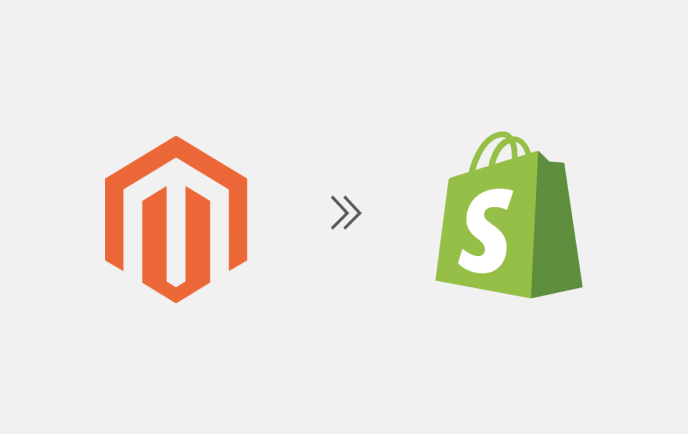Shopify is undoubtedly the most advanced and feature-rich platform for e-commerce ventures all over the world.
Migrating your online store to Shopify can be an exciting and ultimately rewarding task. But there can also be a linked element of hesitation and fear. This is due to the sheer complexity of Shopify Migration and the nagging thought of losing your hard-earned SEO ranking. But this is not anything that a mix of positive attitude and advice from Shopify experts can’t solve.
In this guide we shall try to walk you through the process of migrating your website to Shopify. You would be able to smoothly carry out Shopify Migration afterwards, without losing the hard-earned SEO value of your WordPress website.
Shopify powers about 4.5 million active stores worldwide with average store revenue about $67,000 annually. As of 2023, the global, annual sales processed by Shopify was in the vicinity of $200 billion ($197).
Housing over 6000 apps, boasting almost 100% uptime (99.98%) and 24/7 support, no wonder Shopify is the world’s leading commerce platform. Moreover Shopify is highly reliable and scalable with the ability of handling over 10,000 transactions per minute. Pricing of Shopify starts at $29, which is reasonable, because they do not charge any hidden fees.
Additionally Shopify’s user-friendly interface reduces the setup time significantly. And its built-in SEO tools and mobile optimization features are critical, considering about 79% of mobile users have made an online purchase in the last six months through their mobile devices.
So migrating to Shopify isn’t just an optional upgrade – it’s an essential act to join the market leading technology in the e-commerce sphere.
The Role of Shopify Experts
Engaging Shopify experts can significantly ease the process of migrating your store, because they have gone through it all many times. They know all ins and outs of Shopify Migration and navigation. These professionals can provide you insights about smooth transition and can steer you away from potential pitfalls or mistakes during the process.
From WooCommerce to Shopify
Considering a switch from WooCommerce to Shopify?
Good for you, because WooCommerce requires more hands-on management like a DIY project. Shopify, on the other hand, gives you a streamlined, ready to use platform with a range of tools for easy customization. Here are some key considerations:-
Shopify’s platform with it’s all-in-a-place nature is easier to use and manage than WordPress based WooCommerce
Both platforms offer robust SEO capabilities, but Shopify simplifies the on page optimization due to its built-in apps and tools.
WordPress, with its open-source nature, is a winner here, but Shopify provides a more structured approach with multiple themes and apps.
Undoubtedly Shopify is a proven and better platform for e-commerce activities and you’re on a better territory if you are thinking of switching over to it.
Having established the Shopify superiority in the e-commerce realm, it’s time to end up accomplishing Shopify Migration, without losing the SEO ranking of your online store.
Pre-Migration Checklist
Before migrating your store to Shopify, ensure you have done following preparations:-
Backup all your critical data before the migration. It may include details of products, customers information and transaction history.
Audit your current store for SEO, focusing on traffic, rankings and other key metrics. An SEO agency can also help you here to identify what metrics to retain and what to optimize.
Decide your Shopify store’s structure, design and other key aspects to ensure a smooth and desired transition.
Opt here whether to use a manual method for migration or automated one. While the automated method is quicker, the manual method ensures full control.
Step 1: Choose the Right Shopify Plan
Choose judiciously the right Shopify plan for your online business. Don’t overcommit or overburden your financial resources. You can always upgrade your plan later. Create your Shopify account.
Step 2: Set up your Shopify Store
Set your Shopify store up. Configure essentials: payment gateways, shipping options and taxes. Choose a theme wisely. Select a theme that:-
- Is visually appealing
- Aligns with your brand
- Is user-friendly and mobile-friendly
- Is optimized for performance and SEO
Step 3: Migrate your Data
You can use Shopify’s native import tools or a reliable third-party app to migrate your data. Import all products, customers and orders information. Don’t leave anything behind. Be sure to include metadata. All this will help maintain your SEO integrity.
Step 4: Design and Customize
Tweak your Shopify theme. Customize it to align more with your merchandise. Prioritize mobile responsiveness to ensure better look and performance. Go for fast loading times to ensure good user experience.
Step 5: Redirect Old URLs
Set up 301 Redirects from your old URLs to the corresponding new ones on Shopify website. This step is crucial for preserving and maintaining the SEO value. Otherwise you can lose the link-equity and thus precious traffic.
Step 6: SEO Optimization
Now is the time to focus on the SEO aspect. You can ideally take the help of a good Shopify SEO Agency. Otherwise things to do here are SEO optimizing your product details, meta descriptions and images Alt-texts. Shopify’s SEO tools are handy for this purpose.
Step 7: Test Everything
Before making your store live test everything:-
- Check for any broken links or missing images.
- Test site’s loading speed and mobile responsiveness.
- Ensure all functionalities, including the checkout process, are properly working.
- Last but not the least, check the SEO integrity or compliance using tools like Google Search Console to catch any issue early.
Post-Migration Strategy
After making your Shopify store live, keep a close look on the performance of your store:-
- Monitor SEO Performance
Closely monitor your SEO metrics through tools like Google Analytics. This will gauge your migration success SEO-wise.
SEO is not a once-done process. You can engage with a Shopify SEO agency for ongoing SEO strategies and adjustments. Make sure to regularly update and optimize your content.
Submit your new sitemap to Google right after the migration to update about changes in your site structure.
Avoid these mistakes during Shopify Migration
Even with a solid Shopify Migration plan, there are some common snags to avoid during the execution.
Broken and misdirected links are an SEO nightmare. So make certain all old URLs are correctly redirected through 301 Redirects.
Double-check that all your customer data has been accurately migrated because you don’t want to lose track of your precious clientele.
- Underestimating Downtime
Communicate your loyal clients beforehand about a possible downtime during migration. Flustered clients can be a goner for you.
To retain your old site’s SEO value, don’t forget to import even the minor SEO details like meta tags and image alt texts. Update and optimize SEO settings where necessary for new pages. Take SEO seriously as an ongoing process. You don’t want to bleed SEO-wise.
Conclusion: Ensuring SEO Success on Shopify
Shopify Migration doesn’t have to be a daunting task. Whether you achieve it yourself or bring in a Shopify SEO expert, the goal is the same: move your store to Shopify without losing precious SEO value.
After reading this article carefully, you have learned the ropes to migrate your online store to Shopify.
A smooth Shopify Migration can set the stage for greater visibility and better customer experience later, bringing in more sales. You’ve got this!





